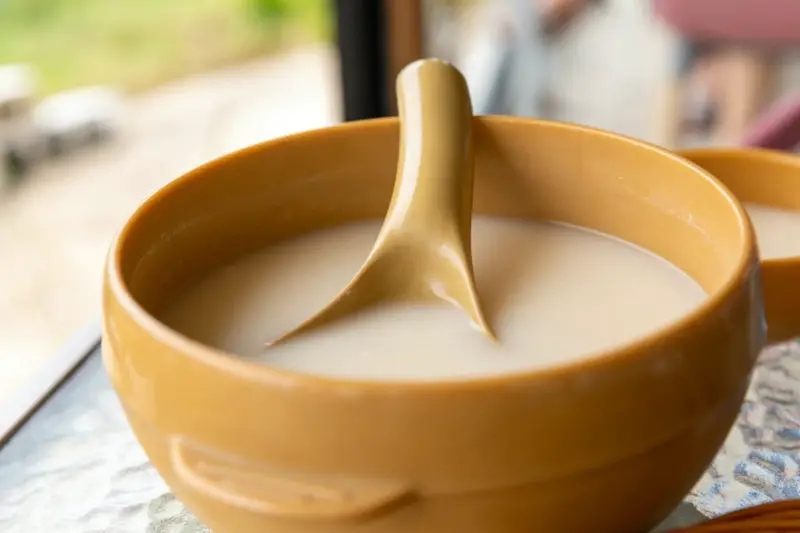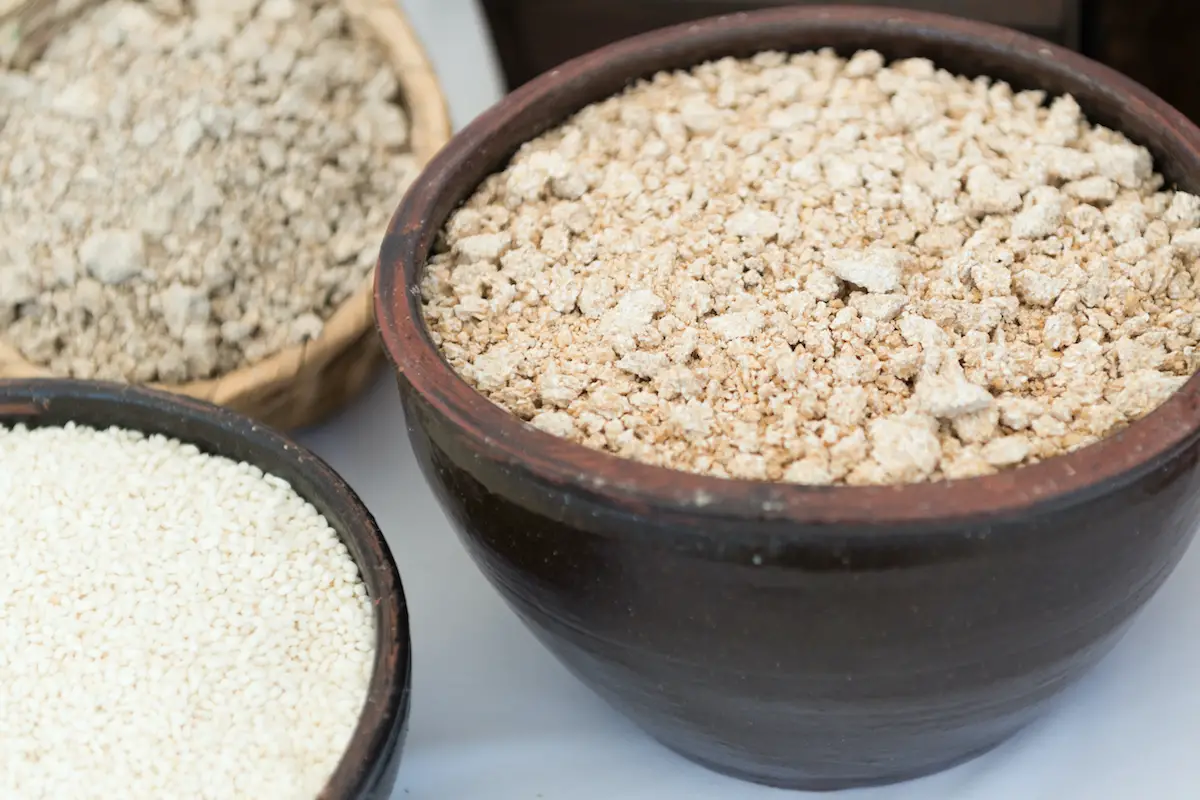This post may contain affiliate links. Please read my disclosure for details at the bottom of this page. As an Amazon Associate, I earn from qualifying purchases on this article about nuruk, otherwise known as a traditional Korean fermentation starter. I hope you enjoy learning about this Korean starter culture!
Do you enjoy Korean alcohol? If so, you may be curious about the ingredients or want to brew some at home!
When making soju or makgeolli, people in Korea start with an ingredient called ‘nuruk.’ This traditional Korean culture starter helps get the process of making alcohol started! Here, we will learn about nuruk and how it is made!
In the end, I list different recipes from the blog that uses soju, the most popular Korean alcohol. Let’s get started!
What Is Nuruk (Traditional Starter Culture)?
Nuruk, otherwise known as a starter culture or fermentation starter, is a Korean ingredient used to make a variety of traditional alcohols drunk for centuries on the Korean peninsula. Historians believe this ingredient dates back to the Three Kingdoms Period (3rd century CE).
In South Korea, people traditionally make nuruk using wheat, glutinous rice, non-glutinous rice, and/or barely. Using either whole or ground grains, people moisten the dry grain and shape it into a large cake. They then let it dry and hang it for 2 to 4 weeks in temperature-controlled dark rooms as the cake ferments. The cake matures at the proper temperature until mold forms. At this point, you are ready to start making alcohol!
Of all the varieties of nuruk, the wheat-based variety is the most common.
Uses of Nuruk in Korean Cuisine:
As stated above, people refer to this traditional fermentation starter for alcohol as ‘nuruk’ (누룩). Below, we list a few well-known drinks that result from using nuruk as a starter:
- Makgeolli (막걸리): This drink is a traditional milky, unrefined, and raw rice wine.
- Soju (소주): Soju is a clear and colorless Korean distilled liquor.
- Cheongju (청주): This drink is a traditional clear and refined rice wine. The word ‘cheongju’ (청주) consists of two words: ‘cheong’ (청) meaning ‘clear’ and ‘ju’ (주) meaning ‘alcoholic drink.’

Nuruk Frequently Asked Questions:
Now that we learned about the uses of nuruk in Korean cuisine, we want to answer some questions you may have about this ingredient! If we do not answer your question, feel free to leave a comment in the section below or email us at [email protected].
Is Nuruk Allergen-Free?
Unfortunately, nuruk often contains major allergens. When made with wheat or barley, nuruk is no longer safe for those who need to be gluten-free, like me.
Because wheat-based nuruk is the most common, I cannot drink non-distilled beverages, such as makgeolli, that use this traditional Korean culture starter. That being said, the distilling process does destroy the gluten protein. This means you can still drink soju!
Where Can I Buy This Ingredient?
You can buy nuruk at your local Asian grocery store. You can also buy it online if you search for ‘nuruk’ or ‘makgeolli starter.’
Finally, you can also buy makgeolli-making kits online! For those in the United States, note that it is illegal to make any distilled liquors, such as soju, at home because of the dangers associated with the process. Any brewed alcohol, like makgeolli, is allowed!
How Do I Properly Store This Ingredient?
Store this ingredient in a cool, dry place away from sunlight. Before use, check the blocks by breaking them apart. If it appears yellow or gray, it is safe to use. If it darkens in color or grows mold, do not use them. You can also smell your nuruk. If it smells fresh, it is safe to use. If it smells of decay, do not use it.
I Hope You Enjoyed Learning About Nuruk!
In the end, I hope you enjoyed learning about the nuruk, otherwise known as the traditional Korean fermentation starter! If so, let me know in the comment section!
If you would like to read more about cooking, you can find recipes as well as further Korean ingredient articles on our blog. I listed some of our favorite Carving A Journey Korean recipes below! For reference, many recipes are influenced by my family’s blended Korean and Southern heritage.
Further Carving A Journey Recipes:
- Somaek (Korean Soju and Beer)
- Soju and Tonic
- Soju Caipirinha
- Yakult Soju Cocktail
- Yakult Soju Popsicles
If you have any questions or comments, you can also email me at [email protected].
And, finally, I would love to hear from you through social media as well! You can follow me at @carvingajourney on Instagram, Facebook, and Pinterest. I also started a vlog Youtube channel! Or, if you would like more articles like these, you can subscribe to my blog by joining the mailing list. Let me know if you try using this fermentation starter! Thank you so much for stopping by!
Carving A Journey is a participant in the Amazon Services LLC Associates Program, an affiliate advertising program designed to provide a means for sites to earn advertising fees by advertising and linking to Amazon.com. Although we may earn commissions for our endorsement, recommendation, testimonial, and/or link to any products or services from this website, these opinions are my own and I fully support these products.

